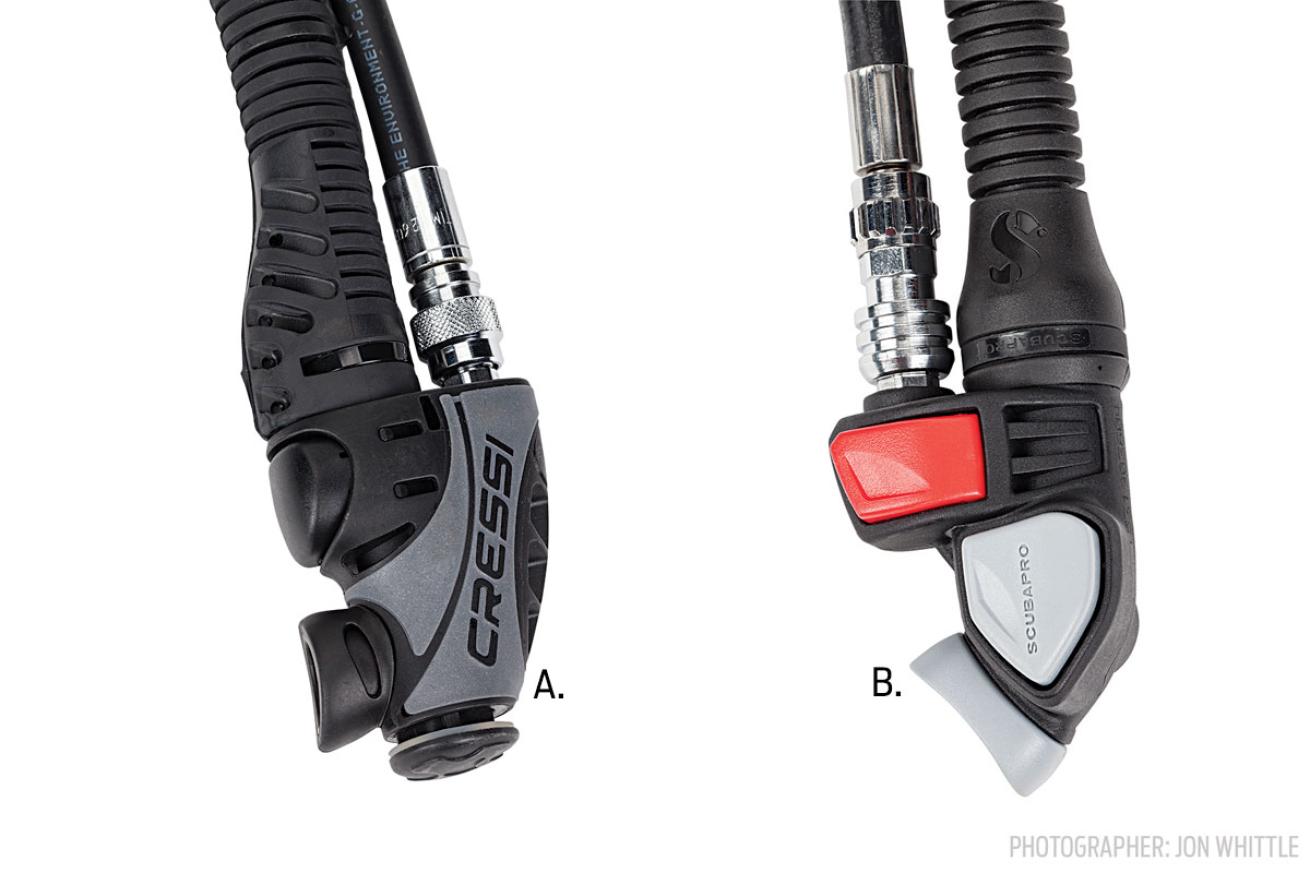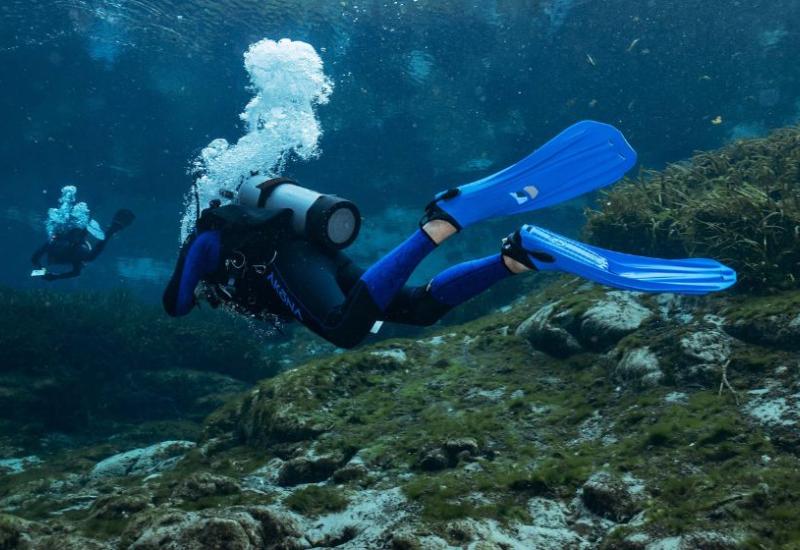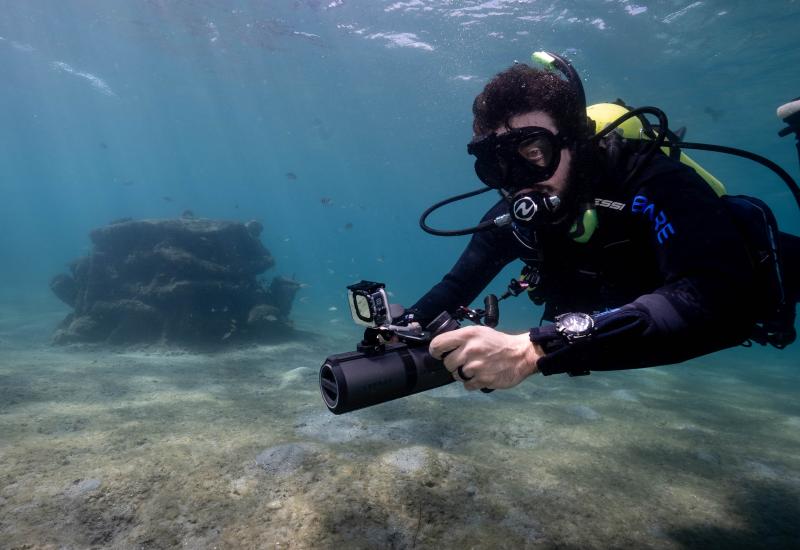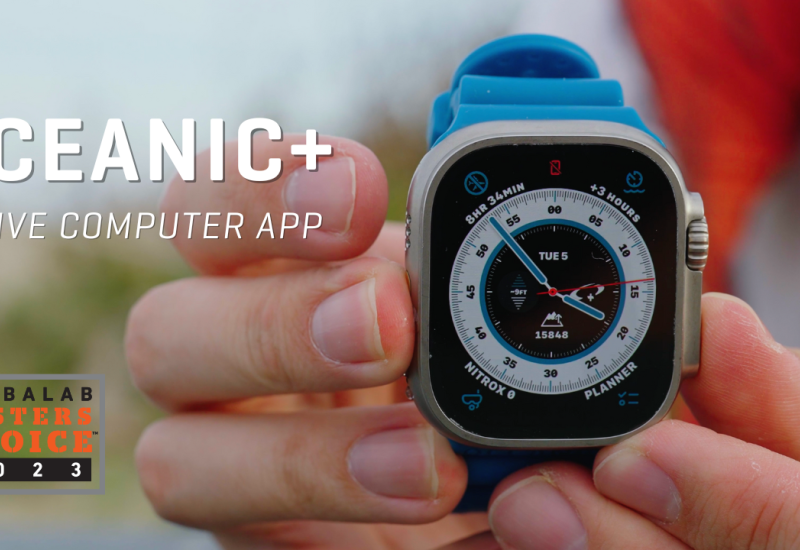What's the Difference in Scuba BCs? Scuba Gear Explained
While reviewing scuba BCs, you're bound to notice a few differences between the many available styles and designs. Some BCs solve the same problem in different ways. Here's a few examples from our 2016 BC test.

Jon WhittleTypes of BC Inflator Hoses
Inflate and deflate buttons on a BCs inflator hose can vary from model to model.
Managing Air
Adding and subtracting air from your BC is not something you want to do often, but when you need to — adding air when you’re at the surface and letting out air when you begin your descent, for instance — you want to know how your inflator/deflator works. The BCs in our test had slightly different approaches to controlling inflation.
The inflator on the Seac Nick uses the most common configuration, with the oral-inflate/manual-deflate button on the end, and the power-inflate button perpendicular to the hose. The Cressi Ultralight’s inflator (A) is a similar arrangement, but with the low-pressure hose on the outboard side and with larger, more-ergonomic inflate/deflate buttons. The inflator on the Scubapro Go (B) is an altogether different configuration. It has a hinged power inflator — rather than the more-common plunger button — and an oral-inflate/manual-deflate button that’s perpendicular to the hose. While divers’ personal preference determined which they liked best, the inflates all performed well.
BCs - The Trend Toward Rec/Tec
Virtually everyone who has successfully made the transition from floundering beginner to seasoned recreational diver will at some point get the urge to take the adventure just a little bit further. This might mean jumping with both feet into technical diving; more likely, it will mean preparing yourself, when the opportunity arises, to maybe go a little deeper, stay a little longer, or carry more equipment.
Let’s call it rec/tec diving — an experience more aggressive than typical recreational diving, but not as specialized or complex as full-on technical diving. Rec/tec divers are growing in number as they log more bottom time and start looking for new ways to keep their diving fresh, whether it be through photography, wreck penetration, or greater depths. Gear manufacturers are responding by building equipment better suited to a heavy-rec/light-tec style of diving — especially BCs. While simple and comfortable enough for recreational diving, rec/tec BCs are much more rugged than standard BCs, they provide lots of buoyant lift, and they offer large ballast pouches and cargo pockets, and heavy-duty D-rings — all good to have when it comes time to take it to the next level.

Jon WhittleDifferences in Weight Pockets/Ditching
Gear manufacturers have developed many different methods for ditching weight from scuba BCs.
How Many Ways To Drop A Weight?
All integrated-weight systems are designed to solve exactly the same engineering problem: how to keep the weights secure from accidentally ditching, while still allowing them to be dropped instantly when necessary.
The systems on these three BCs show how varied the problem-solving approaches can be. The Genesis Drift uses a vertically mounted pocket that loads from the top and opens with a string pull (A); the Tusa Conquest uses more-common horizontal pockets, but they disengage with a twist of the buckle rather than pulling straight out like most other systems (B); and Zeagle’s Halo uses the unique parachute-inspired Ripcord system, in which weights are top-loaded via the red zipper and drop when the Ripcord (secured with hook-and-loop flap to prevent accidental release) pulls its heavy plastic line through the bottom lacing that secures the weight pockets (C).
Are you the proud owner of a new BC? Here's how to prep it for diving.










